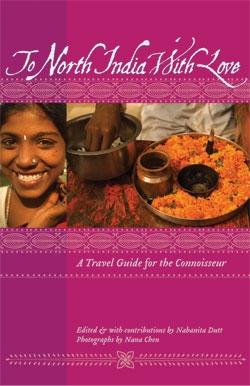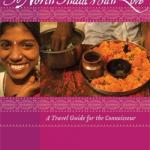Deepanjana Sarkar Befriends a Lonely Castle in the Shivpuri Forests
Excerpted from To North India With Love, available from ThingsAsian Press.
I knew how I would feel if an invited dinner guest failed to show up and a carefully prepared meal had to be thrown in the trash. Disappointed. Perhaps even a little angry. But I couldn't begin to imagine how I would react-especially if I were a king-if I built a whole new castle to entertain a special guest for a single day and the guest didn't bother to come.
That's exactly what happened in 1911 to Maharaja Jiyaji Rao Scindia, who constructed the George Castle to host King George V. The British monarch was traveling in India, and he expressed a desire to go hunting in the Shivpuri forests that belonged to the Scindia royal family. Jiyaji Rao wanted to entertain his guest in great style, and putting him up in one of the royal hunting lodges simply didn't cut it. So he ordered the new castle, where George V could stay for one night.
George Castle went up well before the scheduled date of the British king's visit. But while making his way through the forests, George V managed to shoot so many tigers that he quickly lost interest in the sport and turned back before he reached his destination. In the end, George Castle did not welcome its royal guest, and it has been standing empty ever since.
I stumbled upon this abandoned folly quite by accident. I had stopped at a tea shop near the Shivpuri forests looking for something to drink, when a local told me all about the castle's fascinating history. He was related to the caretaker couple who had looked after it for more than fifty years, and when he was young, they used to unlock it and allow him to play inside. He described huge bathrooms and marble bathtubs and colored tiles on the floors. Alas, that was all he could remember. During the monsoon season, the castle grounds were infested with snakes, and he stopped going there after his brother was almost bitten. The man had no idea if people were allowed to go inside anymore. He hadn't been that way in twenty-five years.
I made enquiries in the area and found a young lad who showed me the way to George Castle for a few coins. It was a fantastic, turreted, British-style structure standing incongruously in the middle of the thick jungle. The building was crumbling in places, and some of the Belgian glass windows were cracked and broken. I thought I could see some signs of restoration work, but that too seemed to have been abandoned long ago. Now the forest was reclaiming the land at its own pace, to wipe out this reminder of the Scindia royal family's humiliation forever.
An atmosphere of defeat seemed to hang over the castle. Or maybe it was just my overactive imagination endowing the old building with feelings. But the George Castle looked so alone and unwanted that I felt impelled to visit it again and again.
I would fill a thermos with tea, collect my book and radio, and spend the last hours of daylight on its front staircase. I don't think I ever opened the book or listened too long to the radio. The gusty premonsoon wind would constantly make the castle moan and creak, and I felt as if the building were trying to tell me the sad story of its life. About how it was born out of a whim and then was cast aside in a fit of pique. My heart went out to the crumbling ruin, but there was little I could do to alleviate its pain. Except perhaps keep it company for a while. Together, we would watch the sun set over the lake nearby, and I hoped the castle felt happier in those moments.
When it was time for me to return to Gwalior after a week of animal spotting in the Shivpuri forests, I took a lot of photographs of the castle. Every time I look at those pictures now, I wonder why I had felt such a strong emotional connection with a pile of bricks and mortar. Perhaps the George Castle's extraordinary history had made me fanciful. Or could it be that the castle, in its misery, really had spoken to me?
FACT FILE:
Shivpuri District
With luxuriant forests and undulating hills, Shivpuri was the summer resort of the Scindia royal family. Over centuries, the area's large population of tigers and elephants became prey to the royal passion for shikaar (hunting), until the thickly wooded land was declared the Madhav National Park and tigers began to be bred in captivity. Today, besides tigers, the park is also home to leopards, jackals, crocodiles, antelopes, and a variety of birds. George Castle is located in its center at its highest point. For more on Shivpuri, including information on how to get there, go to the region's official government website.
http://shivpuri.mp.gov.in
 ThingsAsian
ThingsAsian

















